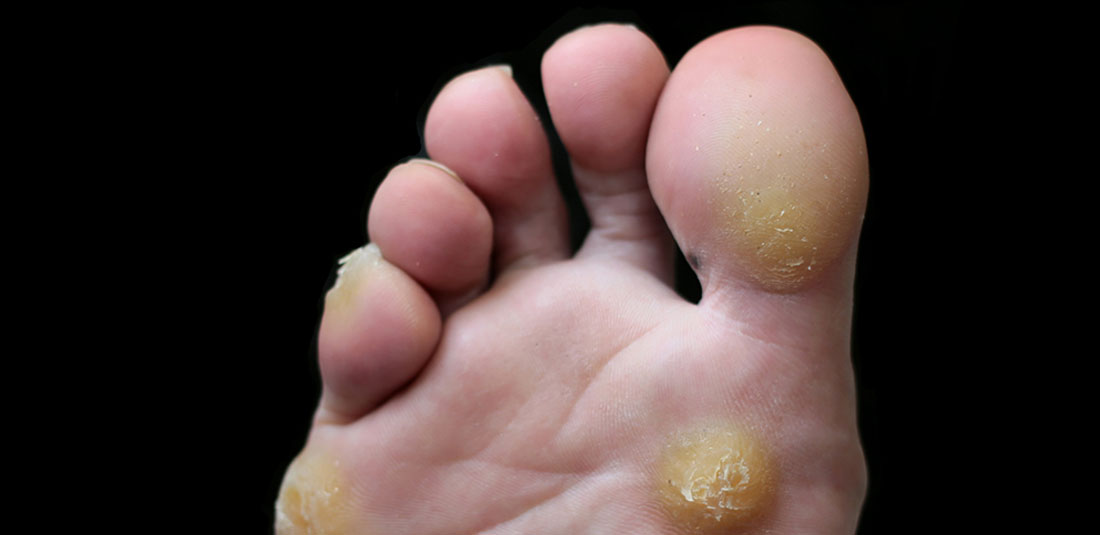
Corns occur at pressure points causing corn on bottom of foot or corn on top of foot or at the side of toes, the balls of the feet, and between toes. Corns on feet can be painful, but they are a response by the body to protect sensitive skin.
Types of Foot Corn
Hard corn – This is a patch of thickened dead skin with a central core that presses on the nerve endings, and it occurs on the tips, tops, and side of toes.
Soft corn – This usually appears between the 4th and 5th toes, it has a thinner surface, rubbery in texture, and appear to be gray or whitish.
Seed corn – It occurs at the bottom of the foot; it is tiny and very tender due to its location. It can be caused by plugged sweat ducts.
Causes of the corns
Corns develop due to improper walking motion and ill-fitting shoes. High-heeled shoes increase the risk of developing corns in women because they put additional pressure on the feet. Other risk factors include wearing sandals without socks due to friction on the feet and some foot deformities.
Pressure or rubbing causes soft corns or calluses. If a child develops foot corn with no source of pressure, consult a foot doctor for proper diagnosis; it could be a foreign body or a wart.
Due to the wearing of shoes, the feet are in a moist environment ideal of bacteria breeding. If the bacteria enter through the skin of the corn causing pus and fluid, this leads to staph infections.
Foot Corn Removal
There are over the counter corn remover options, but it is a good idea to soak and scrape for the medications to work faster. When pressure and friction causing corns are relieved corns go away.
- Soak the corn for five to 10 minutes in warm water to soften the skin.
- Dip the pumice in warm water then use it to gently file the corn in sideways or circular motion to remove dead skin. Please be careful to not take too much skin to avoid infections and bleeding.
- Use donut-shaped adhesive pads to protect corns from further irritation during activity and to prevent any direct contact with the shoes.
- Wear properly fitting shoes because the wrong size and shape of your feet could lead to the development of corns. To get the right fitting shoe shop for the shoes at the end of the day when your feet are slightly swollen.
- Keep your toenails trimmed because long toenails can push the toes and against the shoe causing a corn to form over time.
If you have poor circulation or fragile skin, or you have underlying conditions such as diabetes or peripheral arterial disease visit a podiatrist for foot corn treatment. If you notice signs of infections such as pus, very painful, redness, or swelling visit a podiatrist. The foot doctor can cut away the thickened skin with a scalpel to relieve pressure on the tissue beneath it. If you have questions about foot corn(s) on your feet, you should reach out to a foot and ankle specialist. Feel free to contact our office to make an appointment with our podiatrist. Our Houston foot specialist, Dr. Ejodamen Shobowale can provide you with the care you need to keep you pain-free on your feet.